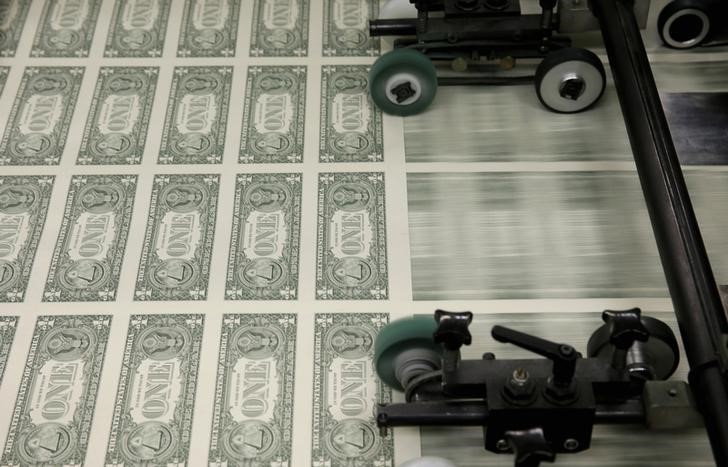Investing.com - The dollar remained at one-month lows against a basket of other major currencies on Thursday, after the release of mixed U.S. economic reports and as the Federal Reserve's latest policy statement continued to dampen demand for the greenback.
The U.S. Department of Labor reported on Thursday that the number of individuals filing for initial jobless benefits in the week ending June 13 decreased by 12,000 to a four-week low of 267,000 from the previous week’s total of 279,000.
Analysts had expected initial jobless claims to fall by 2,000 to 275,000 last week.
A separate report showed that U.S. consumer prices increased by 0.4% last month, below forecasts for a gain of 0.5% and following a rise of 0.1% in April. Year-over-year, consumer prices were flat in May.
Consumer prices, excluding food and energy costs, increased by 0.1% in May, missing expectations for a 0.2% increase.
The greenback came under broad selling pressure after the Fed lowered both its U.S. growth forecast and its interest-rate projections on Wednesday, prompting investors to push back expectations on the timing of an initial rate hike.
The U.S. dollar index, which measures the greenback’s strength against a trade-weighted basket of six major currencies, was down 0.61% at 93.89, the lowest since May 18.
EUR/USD advanced 0.71% to 1.1414 although sentiment on the euro remained vulnerable as a deadlock between Greece and its international lenders continued ahead of the approaching deadline for Greece’s repayments to the International Monetary Fund.
Europe wants Greece to make spending cuts in order to secure a deal that will unlock €7.2 billion in bailout funds and prevent Athens defaulting on its debts when its bailout expires at the end of the month.
The pound was also higher, with GBP/USD up 0.52% to seven-month highs of 1.5918 after data showed that U.K. retail sales ticked up 0.2% in May, in line with forecasts. April's figure was revised down to show a gain of 0.9%, from a previously reported 1.2%.
Core retail sales, which exclude automobile sales rose 0.2% last month, compared to forecasts for a 0.1% rise.
Elsewhere, the dollar was lower against the yen and the Swiss franc, with USD/JPY down 0.71% to 122.53 and with USD/CHF retreating 0.60% to one-month lows of 0.9165.
Earlier Thursday, the Swiss National Bank maintained its rate on sight deposits at minus 0.75%, in line with economists’ forecasts. The central bank also left the target range for the three-month Libor unchanged at between minus 1.25% and minus 0.25%.
The SNB also reiterated that it is prepared to remain active in currency markets to reduce the impact of the "overvalued" franc on the economy.
The Australian dollar was sharply higher, with AUD/NZD up 1.15% to 0.7839, while NZD/USD slipped 0.25% to five-year lows at 0.6969.
The kiwi was hit after official data earlier showed that New Zealand's gross domestic product rose by 0.2% in the first quarter, confounding expectations for an increase of 0.6%. Year-on-year, GDP rose by 2.6% in the three months to March, less than the expected 3.0% increase.
USD/CAD declined 0.76% to trade at 1.2140.
